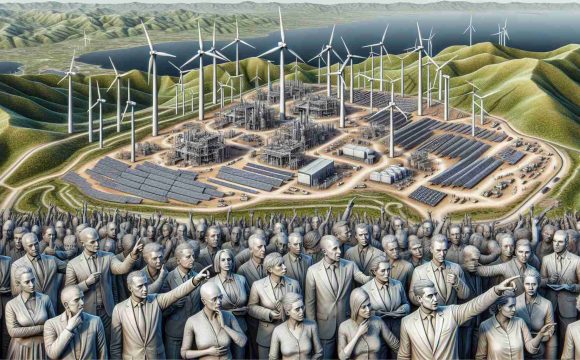Green hydrogen, a transformative energy solution, is reshaping the global energy landscape by offering a sustainable alternative to fossil fuel-derived hydrogen. Unlike its carbon-intensive counterpart, green hydrogen is produced through environmentally friendly electrolysis powered by renewable energy sources like wind, solar, and hydropower. This innovative process not only reduces carbon emissions but also contributes to decarbonizing industries such as transportation, energy storage, and heavy manufacturing.
As the demand for clean energy grows, governments and industries worldwide are increasingly investing in green hydrogen to achieve their net-zero emissions targets. This revolutionary energy source is heralded as a game-changer for hard-to-decarbonize sectors, paving the way for a cleaner and more sustainable future.
Market projections indicate a rapid expansion of the global green hydrogen market, with an estimated value exceeding USD 70 billion by 2030. While Europe currently leads the market, regions like North America and Asia-Pacific are also making significant strides in green hydrogen initiatives to meet decarbonization goals.
The evolution of green hydrogen has been marked by technological advancements, cost reductions, and widespread adoption of renewable energy. Innovations in electrolyzer technology, the establishment of large-scale hydrogen production facilities, and global collaborations are propelling the growth of the green hydrogen market.
With factors such as decarbonization goals, declining costs of renewable energy, energy security, policy support, corporate commitments, and public awareness driving its growth, green hydrogen is poised to revolutionize the energy sector and pave the way for a sustainable energy future.
Revolutionizing the Energy Landscape with Sustainable Hydrogen: Exploring New Frontiers
The rapid rise of green hydrogen as a key player in the energy transition is reshaping the way we envision a sustainable future. While the previous article highlighted the significant strides made in the green hydrogen sector, there are additional aspects worth exploring to gain a comprehensive understanding of this revolutionary energy source.
What Are the Key Challenges Associated with Green Hydrogen Adoption?
One of the pivotal questions surrounding the widespread adoption of green hydrogen revolves around the challenges hindering its scalability and competitiveness. Despite its potential, the current high production costs of green hydrogen compared to fossil fuel-derived hydrogen pose a significant obstacle. Overcoming cost barriers through technological innovations and scaling up production capacity remains a crucial challenge in maximizing the potential of green hydrogen.
Are There Controversies Surrounding Green Hydrogen Production?
While green hydrogen is lauded for its environmental benefits, some critics argue that the energy-intensive process of electrolysis required for its production may limit its overall sustainability. Addressing concerns related to the energy efficiency of electrolysis processes and ensuring that renewable energy sources used for hydrogen production are genuinely green are important considerations in the ongoing discourse around the sustainability of green hydrogen.
Advantages and Disadvantages of Green Hydrogen
Advantages:
– Green hydrogen offers a clean and sustainable alternative to fossil fuel-derived hydrogen, significantly reducing carbon emissions and contributing to decarbonization efforts across various industries.
– The versatility of green hydrogen allows for its use in sectors that are challenging to decarbonize, such as heavy manufacturing, transportation, and energy storage.
– As governments and industries worldwide commit to net-zero emissions targets, green hydrogen emerges as a crucial element in achieving a more sustainable energy landscape.
Disadvantages:
– High production costs associated with green hydrogen production pose a barrier to widespread adoption, requiring further cost reductions to enhance competitiveness.
– Energy-intensive electrolysis processes used in green hydrogen production raise concerns about the overall energy efficiency and sustainability of the process.
– Infrastructure development for widespread hydrogen distribution and storage presents logistic challenges that need to be addressed for the seamless integration of green hydrogen into existing energy systems.
As the energy sector undergoes a profound transformation towards sustainability, green hydrogen stands out as a promising solution with immense potential. Addressing key challenges, controversies, and leveraging the advantages of green hydrogen will be instrumental in realizing a cleaner and more sustainable energy landscape for future generations.
For further exploration of green hydrogen initiatives and developments, visit Renewable Energy World.







